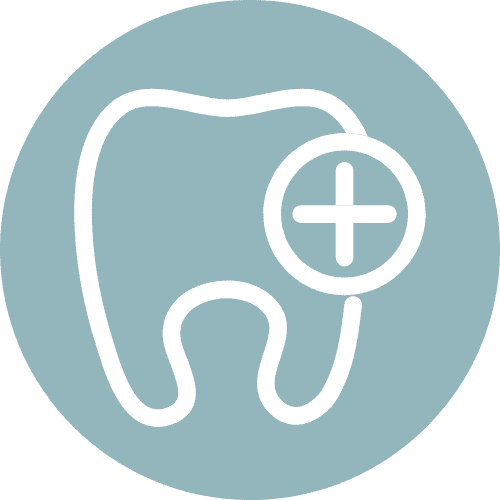Family Dentistry
Dental care for children should be incorporated into everyday life at an early age. Our dentistry methods allow us to help you promote the dental health of your children. At our practice, we offer an array of safe alternatives recommended for kids, and depending on the scenario can help you choose what may be best for your child.
What to expect at your childs dental hygiene
-
Cleaning
-
Exam
-
X-rays
-
Complete Dental Health Evaluation
At your first visit, we ask that you bring any existing medical or dental history documents along with a list of medications you are taking. This information will help us understand your past and current oral-health state. After your initial check-in, our dentists will be able to conduct an oral examination, including a visual exam, oral-cancer screening, dental charting, and periodontal evaluation, as well as discuss any diagnosis and treatment recommendations. We will take digital x-rays to ensure that there is no damage under the surfaces of your teeth and gums. These high-resolution images will allow for a more accurate diagnosis of oral health issues.

Laser Frenectomy
A frenectomy releases the excess attachment by ‘vaporizing; the tissue instead of making an incision. With a laser, the procedure has minimal post-operative discomfort and no stitches. We will guide you through your child’s recovery, and show you post op care.
A frenum is a thick piece of tissue that attaches the tongue and lip to the underlying bone. These frenum attachments can be excessive in small children or babies, that can limit the tongue and movement of the lips. These restrictions can lead to speech problems, misalignment or gaps between teeth, or gum recession.
Should your child need a dental sealant, here’s what you can expect.
-
It’s called a sealant, and it is a thin, protective coating (made from plastic or other dental materials) that adheres to the chewing surface of your back teeth. They’re no substitute for brushing and flossing, but they can keep cavities from forming and may even stop early stages of decay from becoming a full-blown cavity.
-
In fact, sealants have been shown to reduce the risk of decay by nearly 80% in molars. This is especially important when it comes to your child’s dental health. In October 2016, the Centers for Disease Control released a report on the importance of sealants for school-aged children, of which only 43% of children ages 6-11 have. According to the CDC, “school-age children without sealants have almost three times more cavities than children with sealants.”
-
Think of them as raincoats for your teeth. When the cavity-causing bacteria that live in everyone’s mouth meet leftover food particles, they produce acids that can create holes in teeth. These holes are cavities. After sealant has been applied it keeps those bits of food out and stops bacteria and acid from settling on your teeth—just like a raincoat keeps you clean and dry during a storm.
-
Children and adults can benefit from sealants, but the earlier you get them, the better. Your first molars appear around age 6, and second molars break through around age 12. Sealing these teeth as soon as they come through can keep them cavity-free from the start, which helps save time and money in the long run. Ask one of our dentists.
Fluoride Treatments
Fluoride Tooth enamel is the outer covering of your teeth. It’s stronger than bone and made from calcium and phosphate. Your spit, or saliva, is also loaded with calcium and phosphate and bathes the teeth to keep them strong.
When you eat things like candy, crackers or noodles, cavity-causing bacteria starts feasting on the carbohydrates in these foods. This produces acids that attack your enamel. It causes calcium and phosphate to be stripped from the tooth enamel, leaving you more vulnerable to decay and cavities.
However, saliva disrupts the attack as it coats your teeth and adds back calcium and phosphate to replace what had been stripped away.
Now, here’s where fluoride is the superhero. When your saliva has fluoride in it from sources like toothpaste or water, your teeth can take it in. Once in your enamel, fluoride teams up with calcium and phosphate there to create the most powerful defense system your teeth can have to prevent cavities from forming.
Digital X-rays
Digital x-rays give us a closer look at what is going on beyond the surface of your teeth. If you are concerned with your state of dental health, we may recommend you come in for digital x-rays. These images, taken from a computer sensor rather than conventional film, emit less radiation and offer a closer look at your teeth and jawbone.
Intraoral cameras
Intraoral cameras are non-invasive instruments that use real-time video technology to assist us in seeing hard-to-reach places. The lightweight technology is used to help our dentists during procedures, and to make proper diagnoses.

CariFree Cavity Prevention
This preventative tool allows for us to treat teeth with possible cavities before they become greatly affected or compromised. This test determines the level of decay-causing bacteria in a low, moderate, or high-risk ranking. From there, you will be administered one of two types of rinses to kill harmful bacteria. This will greatly reduce the risk of bacteria buildup and tooth decay thereafter.
MI Paste Plus
This topical treatment is applied to protect your teeth, prevent future cavities, and neutralize acid challenges from bacteria. The creamy paste is easy to apply and comes in a variety of flavors.
Other Services
Our dentists and team take continuing education classes and courses to stay up-to-date on technology and techniques that allows Oak Bark Dental to assist you with all of your dental health needs.





